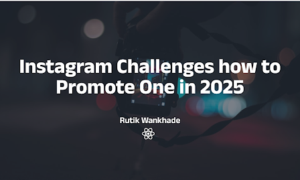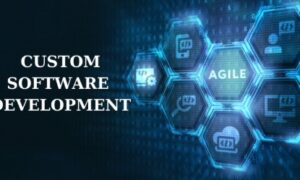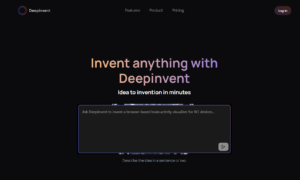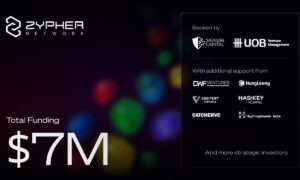Cloud security is given precedence during the global dispersion of workforces in a pandemic era where remote working is a necessity, and expansive networks coupled with a multitude of devices widen the attack surface. It is indisputable that businesses and their priorities have changed, with most adopting or leaning towards a remote culture; thus, there is an increased focus on cloud security; businesses have and still are transforming as they adapt to any new culture.
HCLTech’s Senior Cybersecurity Consultant, Pavan Reddy Vaka, is the author of a recently published research paper in the International Journal of Computer Engineering and Technology Cloud Security and the Hybrid Work Model focusing on the integration of cloud security and hybrid workplace. The paper addresses major difficulties organizations face as well as strategies that help safeguard their digital assets in today’s world.
The Hybrid Work Paradigm: The Cloud Security Problem We Have to Resolve
Increasing cloud security threats are one of the drawbacks of the hybrid work model, which otherwise provides a lot of freedom to companies. Given that there is greater dependence on the cloud to interact and conduct work, the protection of such spaces has become increasingly important. Such a security model is no longer adequate as many employees are now working outside of the organizations using different devices, and the traditional perimeter-based security model where networks within the office walls were secured is now obsolete.
Another important aspect to emphasize is access control management. In this instance, remote work has dramatically extended the environment, which is prone to attack. To adapt to this, robust Identity and Access Management systems go a long way. These systems use a broad range of authentication measures to ensure that only authorized users gain access to core data and applications.
Data protection is yet another paramount issue. The risk of a breach rises with increased data transfers and access between multiple devices. Vaka’s findings emphasize the need for the application of sound encryption methods and monitoring activities to reinforce the confidentiality and integrity of the data.
Compliance and Regulatory Hurdles
In addition, composition tends to be more difficult in a hybrid working model due to the need to comply with complex laws and regulatory mandates such as GDPR, HIPAA, and PCI-DSS. Information has been deteriorating, and clients turning to security is central to everything… You have to make sure that your organization’s cloud security policies conform to these standards.
AI and ML: The Future of Cloud Security
The shift towards using AI applications and machine learning has greatly impacted the cloud security space. AI-powered security solutions enhance the detection of threats and response management as well, according to Vaka. These and other advanced solutions sift through large volumes of information nearly instantaneously, seeking out observable trends that may reflect anomalous behavior suggestive of looming cyber-vandalism. Such tactics enable businesses to withstand threats and manage risks before they get out of hand.
Constructing a Comprehensive Security Posture for Cloud Protection
In order to prevent problems, Vaka recommends implementing a disciplined process that begins with a mission statement. For example, routine risk evaluations should be carried out, security objectives should be unambiguous, and IAM (identity and access management) systems, as well as multi-factor authentication and role-based accessing capabilities should be employed. The safety and security of an organization are assured through constant training of staff, enabling them to detect possible threats and act accordingly.
In the awareness of Pavan Reddy Vaka’s research Cloud Security and the Hybrid Work Model, organizations must adjust the direction of their security models in the perspective of the developing situation; in this case, the adaptive safety approach should be supplied with the elements that encourage prevention and innovations at the organizational level aimed at the continuous search for and development of countermeasures to prospective risks.
Threat and Continuous Monitoring Strategy
One of the ways to preserve the security of a cloud environment is to have the ability to perform active monitoring with the ability to counteract in real time to any potential threats. Certain advanced tools, such as Security Information and Event Management (SIEM) systems and User and Entity Behavior Analytics (UEBA), are crucial while attempting to detect malicious activities. SIEM integrates the management of security events into a central location. On the other hand, UEBA monitors the behaviors of users and systems to understand whether there is a greater chance of intrusion occurring.
Security incidents are quickly addressed with the help of automated incident response workflows, thereby lessening the possible impacts of an incident. These tools ensure that businesses respond to a breach in a timely and effective manner.
Automation of Security Processes of Orchestration
While SSoVV and Spear Phishing workflows are good examples of security zones where automation significantly impacts operation consistency, it seems to be another aspect that, along with time-saving, helps to enhance efficiency. Automated compliance checks help ensure necessary regulatory requirements and implementation of security policies. At the same time, coordination tools provide an enabling environment among different security products so that there are better responses and collaboration throughout the organization.
Security Awareness and Training
The education of employees in the field of security has been proven to reduce risks caused by humans, who are often said to be the weakest element in security systems. Further, it is necessary to expose the employees to updated training programs that cover vital areas of cloud coverage, such as phishing, data safe practices, and reporting of incidents. A system of constant development means that the employees will always know the current trends and the best practices regarding security.
Regular Security Audits and Assessments
To have a good standing in the cloud security space, security audits, and assessments must be done frequently. Internal audits allow monitoring of how well security control measures are working, whereas external assessments provide a more independent outlook and evaluative recommendations for security framework improvement.
Continuous Improvement and Adaptation
In auditing and assessments, or the event of an attack, any aspect that may have been missed should be noted, as the experience may provide fundamental information to safeguard the future. Security frameworks should be able to withstand the evolution of threats, thereby maintaining the effectiveness of the policies enacted.
Analysis of Data and Key Results
Security breaches among those who adopted the cloud security model offered by Vaka reported improvements in various metrics considered industry standards. They recorded a 75% reduction in security pre-existing incidents, the number of failed penetration tests went down by 80%, and the mean time to respond reduced by 83%. These showed that there was an improvement in performance metrics, and the number of IAM users also increased. They also reported an 88% reduction in compliance violations issued.
There is still concern about the multi-cloud problem presented among other challenges, so these results have bright spots; however, one should also realize that there is more work to be done for these organizations. The security strategy introduced will only be effective if resources and training are provided and if there is an emphasis on actively tackling potential security risks.
Conclusion
Considering that a hybrid work model will define how business will be done in the future, this exponentially makes cloud security a priority. Incorporating end-to-end cloud security policies will go a long way in increasing how data is protected, potentially reducing potential threats and compliance issues. Using AI and machine language will improve these capabilities as organizations will be able to respond proactively and timely to the various advancements in technology.
At the very least, organizations that adopt these methodologies will enhance and improve cloud security while promoting growth, further facilitating the challenges posed by hybrid working environments and innovation. You can also visit Cloud Security and the Hybrid Work Model for more details by Pavan Reddy Vaka.































